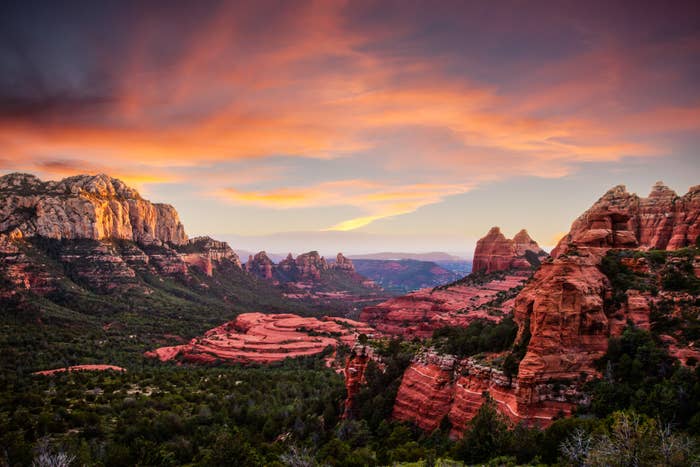1. Find free places to camp.
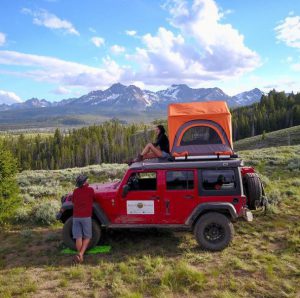 While there are official campsites all over the place with toilets, showers, and running water, these can often cost $10–$20 a night. If you don’t mind roughing it a little, you can find free camping spots all over the country, sometimes called “dispersed camping”. It’s usually just a small area where you can park your car and pitch a tent, though some sites have drop toilets as well. You can find some pretty beautiful places to camp.
While there are official campsites all over the place with toilets, showers, and running water, these can often cost $10–$20 a night. If you don’t mind roughing it a little, you can find free camping spots all over the country, sometimes called “dispersed camping”. It’s usually just a small area where you can park your car and pitch a tent, though some sites have drop toilets as well. You can find some pretty beautiful places to camp.
2. Download offline maps before you go anywhere.
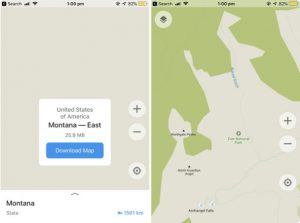 Chances are you’ll be hitting some spots where you won’t have cell service, so definitely make sure you’re prepared. You can always download offline Google Maps, but for trails and small roads, you should use maps.me. When you’re on Wi-Fi, download the maps for every state you’re planning to visit and you’ll be sweet.
Chances are you’ll be hitting some spots where you won’t have cell service, so definitely make sure you’re prepared. You can always download offline Google Maps, but for trails and small roads, you should use maps.me. When you’re on Wi-Fi, download the maps for every state you’re planning to visit and you’ll be sweet.
3. Buy a jug of water and refill it where you can.
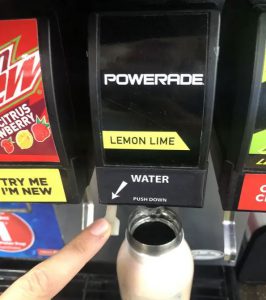 Making sure you have enough water is Road Trip 101, especially if you’re driving through remote areas. Instead of filling up your car with giant water tanks or buying pallets of individual water bottles, grab a one gallon jug. When it’s empty you can refill it for free at national parks, gas stations, and cafés or restaurants along the way.
Making sure you have enough water is Road Trip 101, especially if you’re driving through remote areas. Instead of filling up your car with giant water tanks or buying pallets of individual water bottles, grab a one gallon jug. When it’s empty you can refill it for free at national parks, gas stations, and cafés or restaurants along the way.
4. Keep your cups and reuse them.
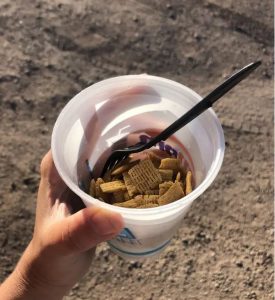 If you buy a coffee or a soda, keep the cup you get it in. You can wash it out and reuse it later as a water cup, or to make brushing your teeth and washing your face easier. You could even use it as a bowl for cereal or oatmeal. Same goes when you eat somewhere that has plastic cutlery — keep it, wash it off, and reuse it.
If you buy a coffee or a soda, keep the cup you get it in. You can wash it out and reuse it later as a water cup, or to make brushing your teeth and washing your face easier. You could even use it as a bowl for cereal or oatmeal. Same goes when you eat somewhere that has plastic cutlery — keep it, wash it off, and reuse it.
5. Wet wipes are your best friend.
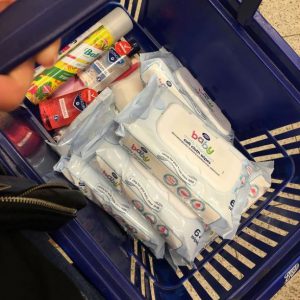 You’re gonna want to always keep a pack of these handy. They’re a good stand-in shower if you’re sweaty after a hike, they’re great for messy snacks and cleaning up spills in the car — name it!
You’re gonna want to always keep a pack of these handy. They’re a good stand-in shower if you’re sweaty after a hike, they’re great for messy snacks and cleaning up spills in the car — name it!
6. Pick up cheap camping gear from Walmart.
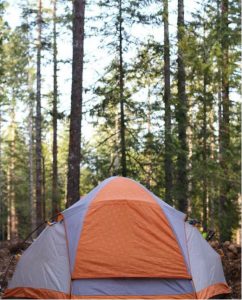 Walmart and other similar stores have really cheap camping stuff. You can get a tent for $20, while air mattresses and sleeping bags start at $8. They’re probably not the most durable, but if you’re just doing a short trip and want to stay comfy, it’s a cheap way to do it.
Walmart and other similar stores have really cheap camping stuff. You can get a tent for $20, while air mattresses and sleeping bags start at $8. They’re probably not the most durable, but if you’re just doing a short trip and want to stay comfy, it’s a cheap way to do it.
7. Or make your car comfortable with a mattress topper.
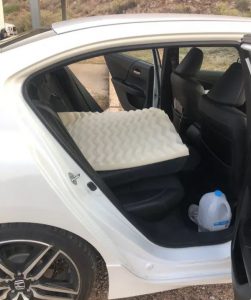 If you’re traveling solo and can’t be assed putting up a tent each night, sleeping in your car might be the easiest option. Once you put down the back seats there should be enough room to stretch out. You can make it even more comfortable by using a cheap foam mattress topper.
If you’re traveling solo and can’t be assed putting up a tent each night, sleeping in your car might be the easiest option. Once you put down the back seats there should be enough room to stretch out. You can make it even more comfortable by using a cheap foam mattress topper.
8. Shower in aquatic centres.
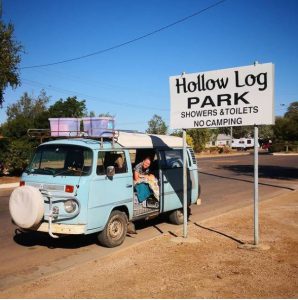 After a couple of days of roughing it, you’re surely going to be clamoring for a shower. If you don’t want to pay $20 for a campsite with running water, most bigger towns will have a rec centre or a public pool with low admission costs.
After a couple of days of roughing it, you’re surely going to be clamoring for a shower. If you don’t want to pay $20 for a campsite with running water, most bigger towns will have a rec centre or a public pool with low admission costs.
Some national parks also have showers you can use for a few dollars, and most RV parks will let you pay for a shower as well, even if you’re not staying there.
Also, if you have a membership at a gym with multiple locations, see if you’ll be passing by any of the branches so you can stop in for a free shower.
9. A picnic blanket takes things up a level.
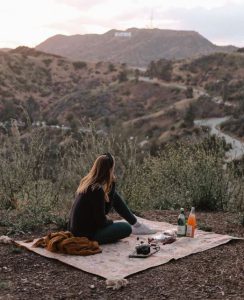 While road-tripping on a budget, you’ll probably be having a lot of DIY meals at campsites or parks along the way. Somehow, sitting on a picnic blanket while eating just makes everything seem a little more fun. It’s definitely better than leaning out your car door while eating a sandwich because there are no picnic tables around and the ground is all dusty.
While road-tripping on a budget, you’ll probably be having a lot of DIY meals at campsites or parks along the way. Somehow, sitting on a picnic blanket while eating just makes everything seem a little more fun. It’s definitely better than leaning out your car door while eating a sandwich because there are no picnic tables around and the ground is all dusty.
10. Use Couchsurfing to make friends along the way.
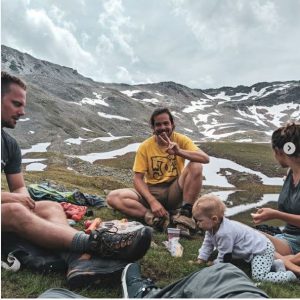 If you’re a solo traveler, you might have heard of Couchsurfing. It’s kinda like a social networking app for travelers to meet and share experiences. It’s a great place to find a road-trip buddy, a friend for an afternoon while you’re passing through a city, or even a couch to crash on when you’re sick of camping.
If you’re a solo traveler, you might have heard of Couchsurfing. It’s kinda like a social networking app for travelers to meet and share experiences. It’s a great place to find a road-trip buddy, a friend for an afternoon while you’re passing through a city, or even a couch to crash on when you’re sick of camping.
11. Research the hell out of everything.
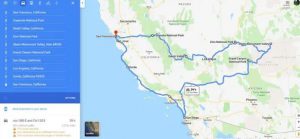 Before setting off on your trip, it’s a good idea to have a rough itinerary of everything you want to see. That way you can plan the shortest route and maximise your gas efficiency. Find out as much as you can about the areas you’re visiting, and you might even be able to coordinate your trip with any local festivals and events.
Before setting off on your trip, it’s a good idea to have a rough itinerary of everything you want to see. That way you can plan the shortest route and maximise your gas efficiency. Find out as much as you can about the areas you’re visiting, and you might even be able to coordinate your trip with any local festivals and events.
Use sites like Reddit to search the area you’ll be in and see if you can find any local secret places, like specific lookout points or an amazing burger place. Take the extra time to do thorough Google searches (try “unique places in X”) and you’ll be rewarded with spots off the beaten path.
12. But don’t get too set in your itinerary.
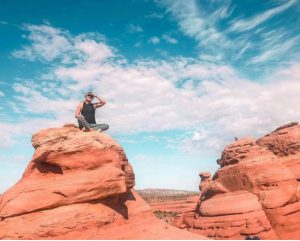 It’s always good to be open to anything that might come up. If you schedule your trip down to the hour, you won’t be able to pull off the highway randomly because you see a sign for the world’s largest pistachio and want to go check it out. Always chat with locals as well — ask gas station attendants or café workers where their favourite spots in the area are. You could find amazing hidden gems this way.
It’s always good to be open to anything that might come up. If you schedule your trip down to the hour, you won’t be able to pull off the highway randomly because you see a sign for the world’s largest pistachio and want to go check it out. Always chat with locals as well — ask gas station attendants or café workers where their favourite spots in the area are. You could find amazing hidden gems this way.
13. Don’t fill up at the first gas station you see.
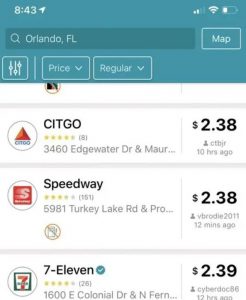 Before getting gas, just check if there are any other stations around you that are cheaper. Google Maps will give you fuel prices, or use an app like GasBuddy.
Before getting gas, just check if there are any other stations around you that are cheaper. Google Maps will give you fuel prices, or use an app like GasBuddy.
14. Charge up your devices at Starbucks.
 Starbucks is a lifesaver when you need free Wi-Fi, or when your phone’s about to die. Every couple of days you can stop in for an hour or two and charge up your phones or computers or whatever you need. Obviously, you could do this at any café, but most Starbucks stores usually have a ton of outlets.
Starbucks is a lifesaver when you need free Wi-Fi, or when your phone’s about to die. Every couple of days you can stop in for an hour or two and charge up your phones or computers or whatever you need. Obviously, you could do this at any café, but most Starbucks stores usually have a ton of outlets.
15. You don’t have to rely on mainstream car rentals.
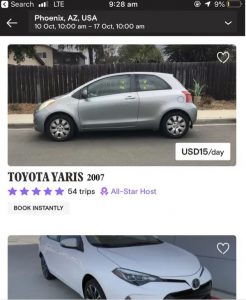 If normal car rental agencies are sold out of cars or don’t have a model you like, you could check out a service like Turo. It’s sort of like Airbnb for cars — people rent out their vehicles for pretty great prices. It’s ideal if you don’t have a credit card, as you can book with a normal debit card. The only downside is that you’d have to end your trip where you started.
If normal car rental agencies are sold out of cars or don’t have a model you like, you could check out a service like Turo. It’s sort of like Airbnb for cars — people rent out their vehicles for pretty great prices. It’s ideal if you don’t have a credit card, as you can book with a normal debit card. The only downside is that you’d have to end your trip where you started.
16. Check a car’s fuel efficiency before renting.
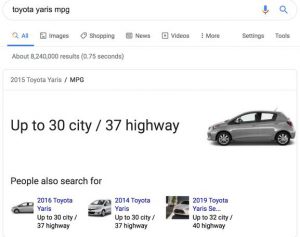 You might think you’re getting a great deal renting a car for $15/day, but if it gets bad gas mileage, you’ll be spending a lot more money when you fill up. Compare the different models on offer (if you Google “the car + mpg” it should come up). Aim for between 30 and 40 miles per gallon, though the higher the better.
You might think you’re getting a great deal renting a car for $15/day, but if it gets bad gas mileage, you’ll be spending a lot more money when you fill up. Compare the different models on offer (if you Google “the car + mpg” it should come up). Aim for between 30 and 40 miles per gallon, though the higher the better.
17. Find out about national park access.
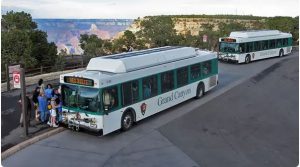 If you’re visiting in the summer, national parks can get super busy by 8 a.m. A lot of parks offer shuttle buses, so instead of having to fight for parking, you can leave your car in a lot and take the bus into the park. In some state parks, this can save you money on entrance fees as well.
If you’re visiting in the summer, national parks can get super busy by 8 a.m. A lot of parks offer shuttle buses, so instead of having to fight for parking, you can leave your car in a lot and take the bus into the park. In some state parks, this can save you money on entrance fees as well.
18. Stock up on snacks when you see a Walmart or cheap grocery store.
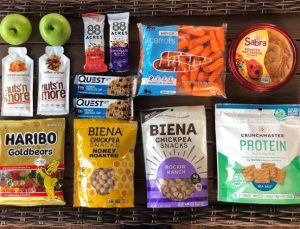 Before you leave, brainstorm a list of snacks and meals that you’ll want on your trip: granola bars, crackers, fruit, trail mix, etc. Try to buy it all at a grocery store, and top up your food stash when you can. This way you’ll avoid dropping too much cash on overpriced gas station snacks that you didn’t even really want.
Before you leave, brainstorm a list of snacks and meals that you’ll want on your trip: granola bars, crackers, fruit, trail mix, etc. Try to buy it all at a grocery store, and top up your food stash when you can. This way you’ll avoid dropping too much cash on overpriced gas station snacks that you didn’t even really want.
19. And keep in mind: You’re gonna need cash.
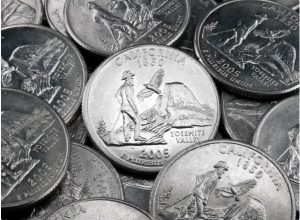 We live in a world where you can pay for everything with your credit or debit card, especially if you’re a big city-dweller. But once you get to some small towns, you might find places that don’t accept your card, so keep cash handy. You’ll especially need it for some campsites in state parks, as well as for showers or laundry.
We live in a world where you can pay for everything with your credit or debit card, especially if you’re a big city-dweller. But once you get to some small towns, you might find places that don’t accept your card, so keep cash handy. You’ll especially need it for some campsites in state parks, as well as for showers or laundry.

